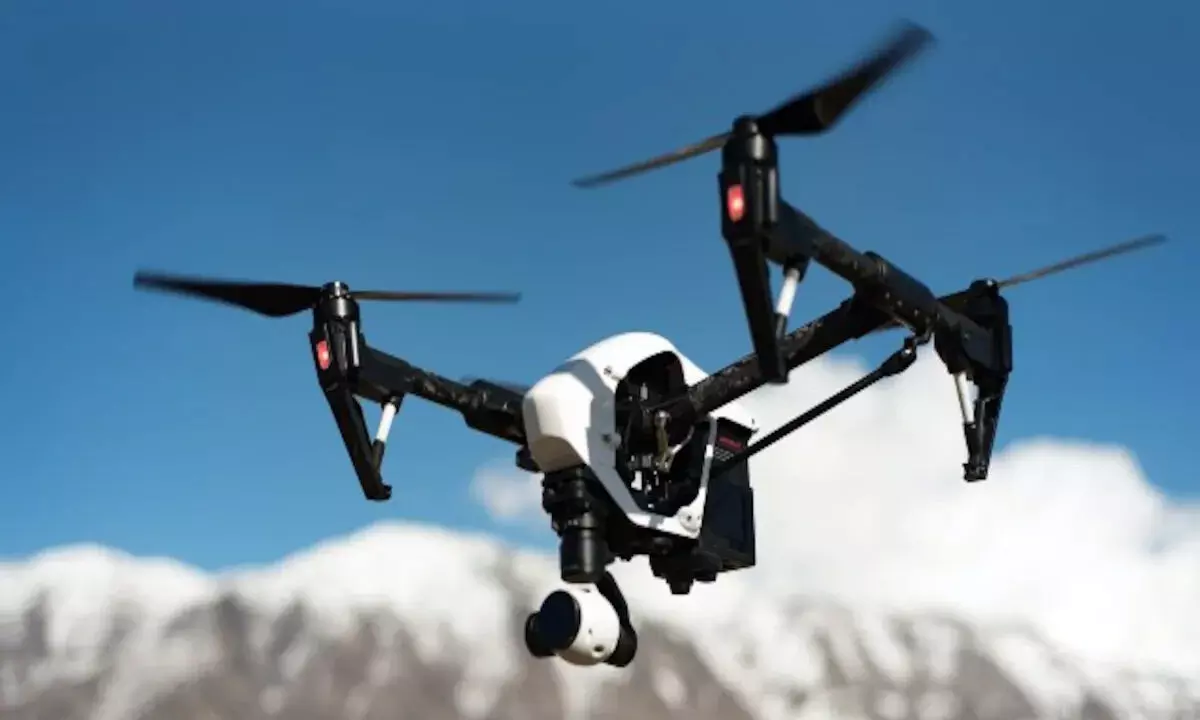India preparing for drone warfare
Over next 15 years, Indian Army plans to induct UAVs down to the battalion level, while Indian Air Force aspires to have at least six 18-fleet squadrons of both armed and unarmed UAVs
image for illustrative purpose

The primary purpose of any unmanned aerial vehicle (UAV) is ISTAR (Intelligence, Surveillance, Target Acquisition, and Reconnaissance). Armed UAVs are also used to conduct precision strikes and are also used to suppress enemy air defence systems. They are also cheaper than fighter planes and act as the first line of defence in safeguarding our pilots' lives.
According to the Drone Industry Insights Report 2020, the worldwide drone industry is predicted to increase at a 13.8 per cent CAGR to $42.8 billion by 2025. India's unmanned aerial vehicle market is expected to grow at a CAGR of 20.9 per cent between 2020 and 2026.
The Civil Aviation Ministry projects that India's drone industry could see a total turnover worth Rs 120 billion to 150 billion by 2026, assisted by the PLI Scheme, which has a budget allocation of Rs 1.2 billion spread over three years. Drone makers in India currently have a turnover of about RS 800 million ($10.88 million).
Over the next 15 years, the Indian Army plans to induct UAVs down to the battalion level, while the Indian Air Force aspires to have at least six 18-fleet squadrons of both armed and unarmed UAVs. With Requests for Information/Requests for Proposal (RFI/RFP) estimated to be to the tune of 100 a year, developing these advanced electronics in-house reduces imports, with India possibly becoming their exporter to the very countries we buy them from.
Hindustan Aeronautics Limited (HAL) will start working on producing six airframes to conduct evaluation trials of the TAPAS BH-201 drone, which will be used for missions by the armed forces. The airframe is the basic structure of the drone or unmanned aerial vehicle (UAV) and includes its wings, tail and main body.
According to HAL, 76 TAPAS drones will be inducted into the armed forces - Army (60), Air Force (12) and Navy (4). The project, conceptualised in 2016, is slated to get over in 2023.
The Drone Rules 2021 ("Drone Rules") is a supersession of the earlier existing Unmanned Aircraft System (UAS) Rules, notified in March, 2021. The Drone Rules were issued by the Ministry of Civil Aviation on August 26, 2021, and do not apply to drones used by the naval, military, or air forces of India.
The most significant change under the rule is that the most popular devices in this segment (due to their affordability and practicality) are likely to be classified as micro and nano drones for which users will no longer need a remote pilot's license. Another notable aspect is that the coverage of drones under Drone Rules has been increased from 300kg to 500kg and will cover drone taxis. The rules also reduced the fees for permissions to operate drones.
Types of UAVs based on mission type
Target and decoy: Provide ground and aerial systems a target and simulate an enemy missile or an aircraft; Reconnaissance UAVs: These are used to provide intelligence on the battlefield; Combat UAVs (UCAV): Provide attack capability for some high-risk missions. These include precision strikes and kamikaze-style attacks. Transport UAVs: These are used to transport essential supplies to troops in remote areas. Swarm Drone: A significant number of UAVs act in synchronisation autonomously to overwhelm the enemy.
DRDO Abhyas was successfully flight tested on 22 October 2021. It was based on the DRDO Lakshya, and the design was refined. It was designed by the Aeronautical Development Establishment (ADE) and will be manufactured by Hindustan Aeronautics Limited (HAL). It can be used to simulate enemy aircraft, validate various missiles under development, and validate existing missile technologies.
The DRDO Rustom-I is a Medium Altitude Long Endurance (MALE) class of UAV and is based on NAL's Light Canard Research Aircraft (LCRA). It was designed to replace or supplement the IAI Heron UAV in service with the Indian Army.
The Stealth Wing Flying Testbed (SWIFT) is a technological demonstrator for the Ghatak UCAV program. The ground trials of the SWIFT prototype were started in June 2021. A naval variant of SWIFT will be used as a deck-based UCAV for the Aircraft carriers of the Indian Navy. It can also be used as a wingman drone for the IAF. It will also be used as a bomber drone for the Indian Army. SWIFT has a range of 200Km, flight endurance of an hour, and a maximum altitude of 6 Km. The SWIFT-based Ghatak UCAV will have a maximum take-off weight of 15 tonnes. It will feature a stealthy design and an internal weapons bay. Its features are common with the AMCA program, and the technologies developed for the AMCA will be integrated into this program. The first flight of the Ghatak UCAV is expected to happen in 2024-2025.

